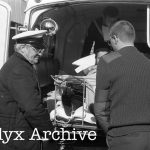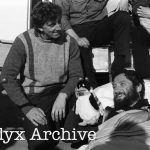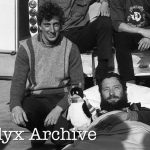Lt. Cmdr. Clive Waghorn of the Royal Navy, and army Lance Cpl. Terry Gillarrive back at RAF Brize Norton.
A Royal Navy helicopter plucked an injured polar explorer from a blizzard-swept ridge in Antarctica, where he and a colleague had been stranded five days with only a tiny tent for protection.
A Wasp helicopter from the British survey ship Endurance spotted the injured man, Lt. Cmdr. Clive Waghorn of the Royal Navy, and army Lance Cpl. Terry Gill at their tent 3,500 feet up a mountain on Brabant Island, one of the most inhospitable places in the world.
The Wasp dropped flares to guide two Sea King helicopters from the support ship Olna. One chopper landed three marines and a doctor near the stranded men. They found Waghorn ”alive, as well as could be expected and alert,” said Lt. Chris Pardoe from the Endurance.
Waghorn broke his leg in a fall down a crevasse Monday while leading a four-man expedition mapping Brabant Island. The two other men in the expedition came down off the mountain to get help after the accident.
About half an hour after dropping the marines and the doctor, one copter took them and the stranded men back to the Olna. The other Sea King picked up 14 marines who had been airlifted to the island earlier to begin a 4-mile trek in fog and bone-numbing temperatures to rescue the men.
”Our Wasp helicopter piloted by Lt. Cmdr. John White was able to get through a miraculous hole in the cloud up to the tent site,” said Capt. Patrick McLaren by radio from the Endurance.
Poor weather foiled previous attempts to reach the men during the last three days, and there was concern that they might have been running low on morphine to kill the pain in Waghorn`s broken leg. Waghorn and Gill had nine days of supplies at the start of their ordeal and were never in radio contact. Brabant Island is 900 miles south of the Falkland Islands and 2,000 miles from the South Pole.













